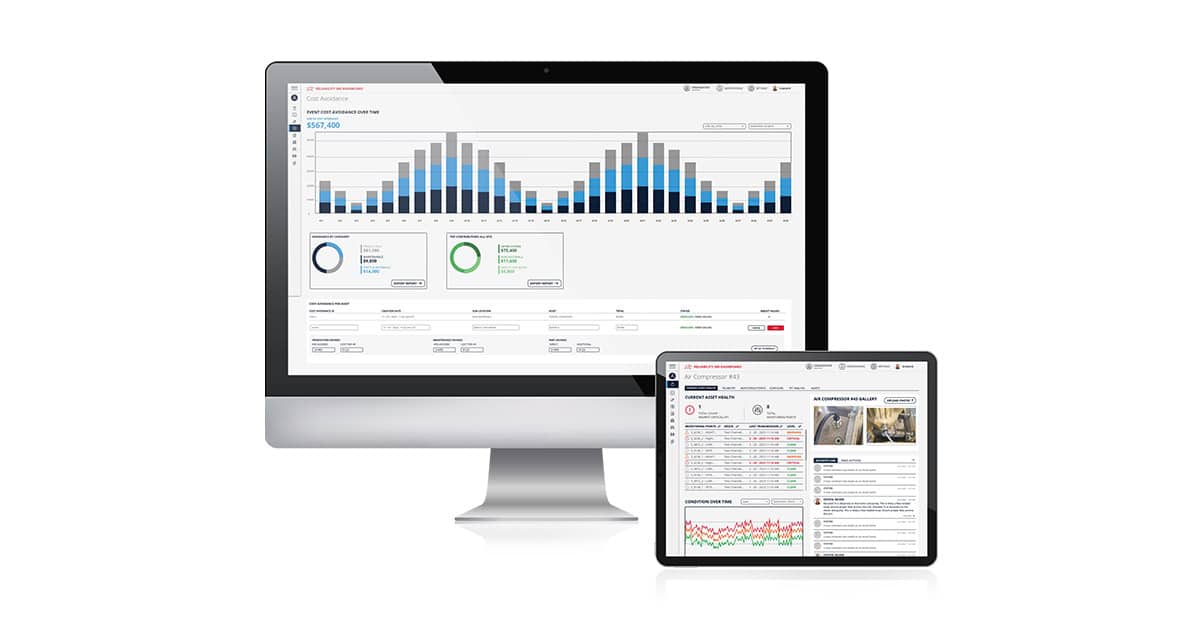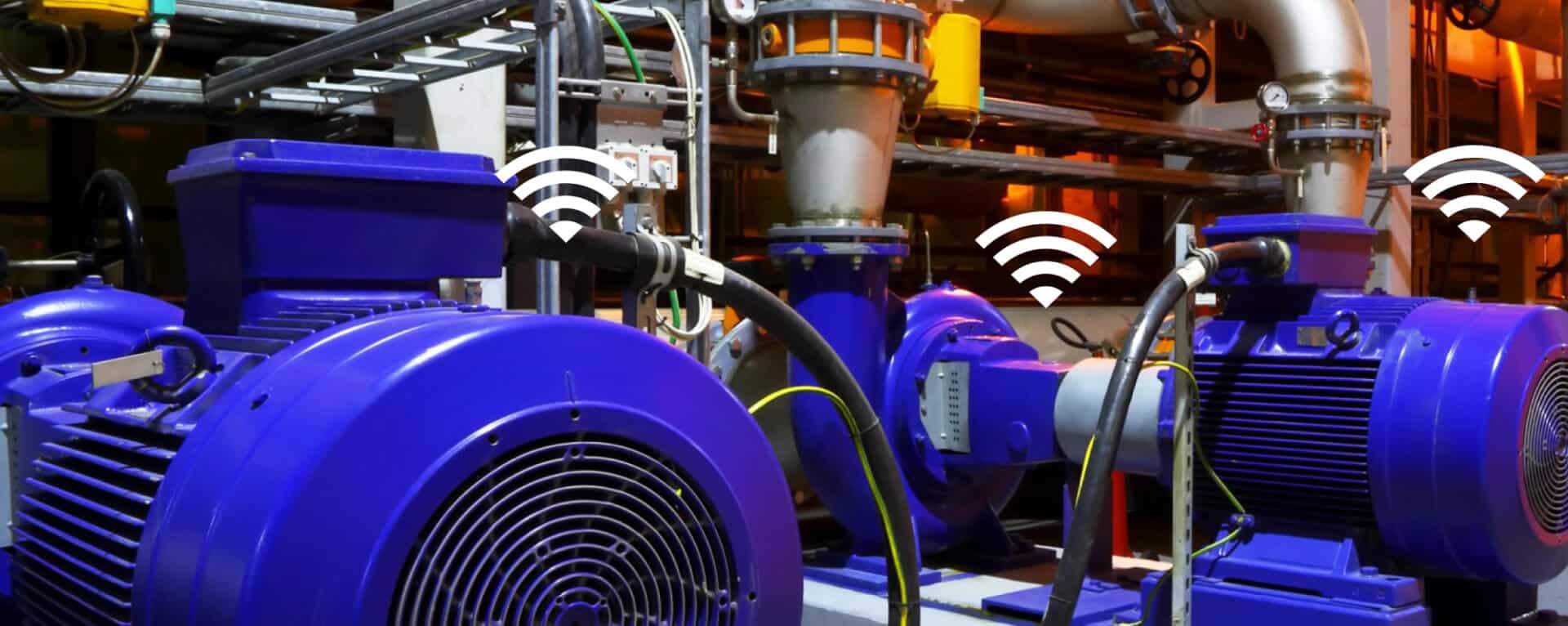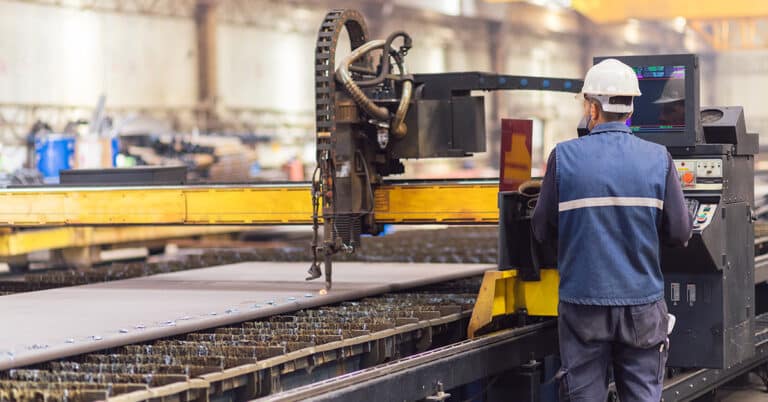Industrial and manufacturing facilities are increasingly introducing predictive maintenance strategies into their operations, drawn by the proactive nature of predictive maintenance and the cost savings, quality benefits and productivity improvements that it offers.
Vibration analysis is a flagship predictive maintenance technology, playing a role in nearly every predictive plan, thanks to its relative ease of implementation and broad range of applications, with the ability to detect numerous types of operational issues.
On this page, we will define vibration analysis, explore it in greater detail, and take an in-depth look at the benefits it can offer.
What is vibration analysis?
Vibration analysis uses equipment sensors to measure and track the performance and function of rotating parts in machinery. As wear occurs on the rotating part — as it will with any moving parts — as well as any components with which a rotating part comes into contact, the performance of the component will begin to be affected. Because wear has occurred, the component is no longer in its optimal state. Over time, performance will degrade in areas such as accuracy, efficiency and speed.
Vibration analysis can detect the beginnings of these performance changes to provide advance warning of potential production issues, well before they affect output and uptime. What is vibration analysis in maintenance? In general, it will comprise these four key components:
- Advanced sensors and technology: Vibration analysis includes several vectors, depending upon the type of equipment and the performance being measured. Sensors are able to measure performance metrics such as rotation displacement, velocity, acceleration and more. These metrics provide historical reference data as well as real-time monitoring of performance — and advance alerts when a problem appears likely to occur.
- Understanding of sensor output and vibration testing equipment: Vibration monitoring and analysis go beyond simple outputs. The most effective vibration monitoring strategies use sensors and data to enable advanced analytics such as waveforms, modal analysis, frequency signal algorithms, phase measurement, spectral density, envelope analysis and more. It is critical to understand what first-order data these systems require, and how to configure sensors and monitoring equipment to obtain it.
- Familiarity with the rotating equipment: There are two sides to vibration monitoring: the sensors and testing equipment described above, and the rotating equipment. Proper sensor implementation and setup require a deep understanding of the nature of the equipment in question in order to be effective and accurate.
- The expertise to interpret and act upon data: As discussed above, baseline data collection in vibration analysis is used to enable more advanced metrics and analytics, which in turn enables the predictive, proactive nature of the technology. In addition to sensor technology, the right personnel must be on hand to interpret data, make recommendations based on this information, and develop action plans to be most effective.
Benefits of vibration analysis
The benefits of vibration analysis are many, and cover a broad range of equipment and applications — which we will discuss in the next section:
- Real-time, early detection of potential production issues: Proactive maintenance is always preferable to reactive maintenance — that which occurs after a problem has become too big to ignore, often when it leads to component failure and equipment shutdown. Predictive maintenance enables detection of potential issues that eventually lead to equipment shutdown, much earlier in the process — allowing for scheduled maintenance checks and greater control over any necessary repairs, minimizing the impact of productivity.
- Data access from anywhere: As a sensor-enabled, data-based process, vibration analysis can be monitored from anywhere, including off-site. This creates greater flexibility in scheduling and allows for much easier and more effective monitoring.
- Longer equipment life: By identifying when equipment wear begins to affect performance, vibration analysis allows for more effective fine-tuning and minor corrective maintenance, which helps keep components and equipment in optimal shape for a longer period. When equipment is allowed to run to failure, parts must often be fully replaced, which means increased costs.
- Improved part quality: Because equipment is kept in optimal operating condition through greater insight into performance, machines are better able to produce consistent parts at maximum quality.
- Longer time between part repairs and replacements: Building on the above advantage, vibration analysis can extend the time that elapses between major maintenance events that require significant repairs or full replacements, further lowering your costs. It is much more cost-effective to carry out targeted corrective and minor maintenance, keeping the same component in good repair, than to replace it or conduct major repairs.
- Data for root cause analysis: Industrial sensors such as vibration monitors provide vast amounts of data that can be used to improve many areas of maintenance operations. Root cause analysis is one of these areas — a tactic that uses data to enable much more efficient, targeted maintenance through more accurate and focused troubleshooting.

How vibration analysis works
Vibration analysis is enabled through sensors and communication technology, added to any type of rotating equipment. Example types of equipment include:
- Fans
- Rotors
- Shafts
- Bearings
- Gears
- Belts
- Rotating fields such as electrical or liquid fields
Once sensors are in place, they are used to measure three vectors:
- Displacement: Displacement looks at the time intervals between vibration peaks and valleys in a wave chart or frequency measurement. If displacement becomes irregular, or goes outside of an accepted minimum or maximum, it may indicate an impending issue.
- Velocity: Velocity measures equipment movement as a function of time, and similarly should occur within an identified acceptable range.
- Acceleration: Acceleration measures velocity change as a function of time and is useful as a data point for analytics such as dynamic fault analysis.
Who benefits from vibration analysis?
All types of production machinery with rotating parts can benefit from vibration analysis. This technology can make a major impact on maintenance efficiency and overall productivity at any type of manufacturing facility or industrial operation.
Several industries where vibration analysis is viewed as especially useful are:
- Aerospace
- Automotive
- Building Products
- Heavy Equipment
- Consumer Packaged Goods
- Paper & Pulp
- Power Distribution
- Tire and Rubber
Helping manufacturers around the world
As a leading industrial technology service provider, ATS features expertise in designing, implementing and managing vibration analysis plans to enable a predictive maintenance strategy. Vibration analysis and predictive maintenance offer the benefits described above: increased uptime, more efficient maintenance, and improved quality and productivity overall. Vibration analysis is part of our R360® Machine Health Monitoring, helping manufacturers optimize their productivity and operations. For more information, contact ATS today.






